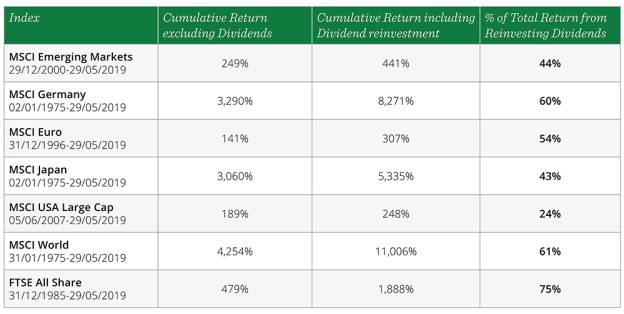PARTNER CONTENT by QUILTER INVESTORS
This content was paid for and produced by QUILTER INVESTORS
Generating a sustainable and steady income stream is not only appealing as a flow of revenue, it can also be used to enhance long- term returns through the power of compounding, as Helen Bradshaw, portfolio manager at Quilter Investors, explains.
In the current environment of low interest rates and historically low yields from many traditional income investments, for many the search for a regular and sustainable income is the main attraction of an income solution. The ability to use sustainable distributions to boost income, build up savings or pay for unexpected events makes the choice of an income fund almost too easy in the current environment.
There are, however, additional benefits for investors choosing an income solution outside of the regular payments. For those who don’t want or need to take income on a regular basis, the decision to reinvest that income back into their portfolios can have a significant impact on investment returns over the longer term.
For example, figures show that over a period of almost 35 years the FTSE All Share Index delivered a cumulative return (excluding dividends) of 479%. However, if investors had reinvested their dividend income back into the market instead of taking it as income, then their returns would have jumped to an impressive 1,888%.

Source: Bloomberg as of 29/05/2019
This dynamic exists further afield too. Over a 45 year period the MSCI World Index delivered a cumulative return of 4254%, but this jumps to 11,006% had dividends been reinvested over this time. The evidence is equally compelling if you look at the MSCI Emerging Markets Index, which saw the total return almost double from 249% to 441% with 44% of the higher returns coming from dividend reinvestment.
The reason for this significant improvement in returns is the power of compounding. Essentially, by reinvesting income into a portfolio, the investor is buying more of the underlying investment, such as company shares. By holding more shares the investor then has the potential to earn more income from dividends in the future, which if reinvested then repeats the process. With this relatively simple technique the investor earns returns on their returns creating a snowball effect that can produce far more than they might have imagined.
By holding more shares the investor then has the potential to earn more income from dividends in the future, which if reinvested then repeats the process.
Of course, the contribution that dividends can make to overall returns depends on a number of factors, including the dividend strategy of the underlying companies remaining sustainable.
In a world of low interest rates, some companies may be tempted to borrow in order to make shareholder pay-outs, which could be a sign of larger problems such as a weak balance sheet. And at times of market stress this could lead to unexpected cuts or even suspensions of dividend payments, which can affect the level of income available to reinvest or withdraw. This was clearly demonstrated during the global financial crisis when UK banks in particular – a key source of UK equity income – were forced to cut or suspend their dividend payments, resulting in total UK dividend payments falling around 13% from £62bn in 2008 to £54.1bn in 2009.
Reinvesting income for the future can be a useful strategy to build up returns relatively quickly, which can then be used to take a higher income, or to benefit from more capital growth. But whichever path investors choose, doing your homework on the sources of the income remains key. As we know, stock markets do not go up in a nice straight line and there will be peaks and troughs and periods of economic uncertainty, which makes diversification of income sources even more important.
For further information on the Quilter Investors Monthly Income range, please click here
For Investment Professionals only. Past performance is not a guide to future performance and may not be repeated. Capital at risk.
This communication is issued by Quilter Investors Limited ("Quilter Investors"), Millennium Bridge House, 2 Lambeth Hill, London, England, EC4V 4AJ. Quilter Investors is registered in England and Wales (number: 04227837) and is authorised and regulated by the Financial Conduct Authority (FRN: 208543).
For further information and to access the KIID and prospectus for the Quilter Investors Monthly Income and Quilter Investors Monthly Income and Growth Portfolios, please visit the Quilter Investors website.
This is a Quilter Paid Post. The news and editorial staff of the Financial Times had no role in its preparation.
Find out more









